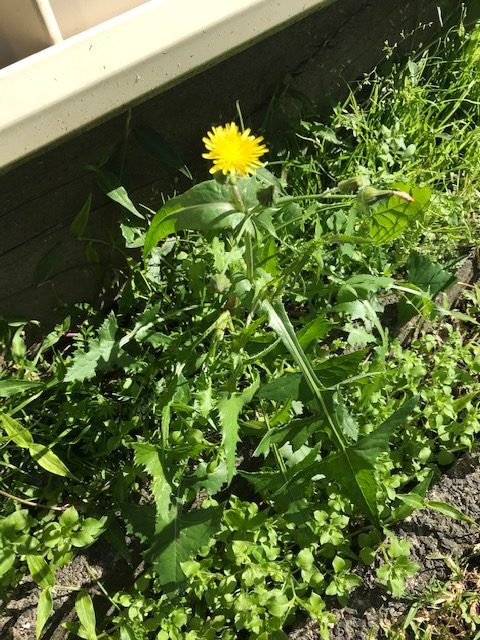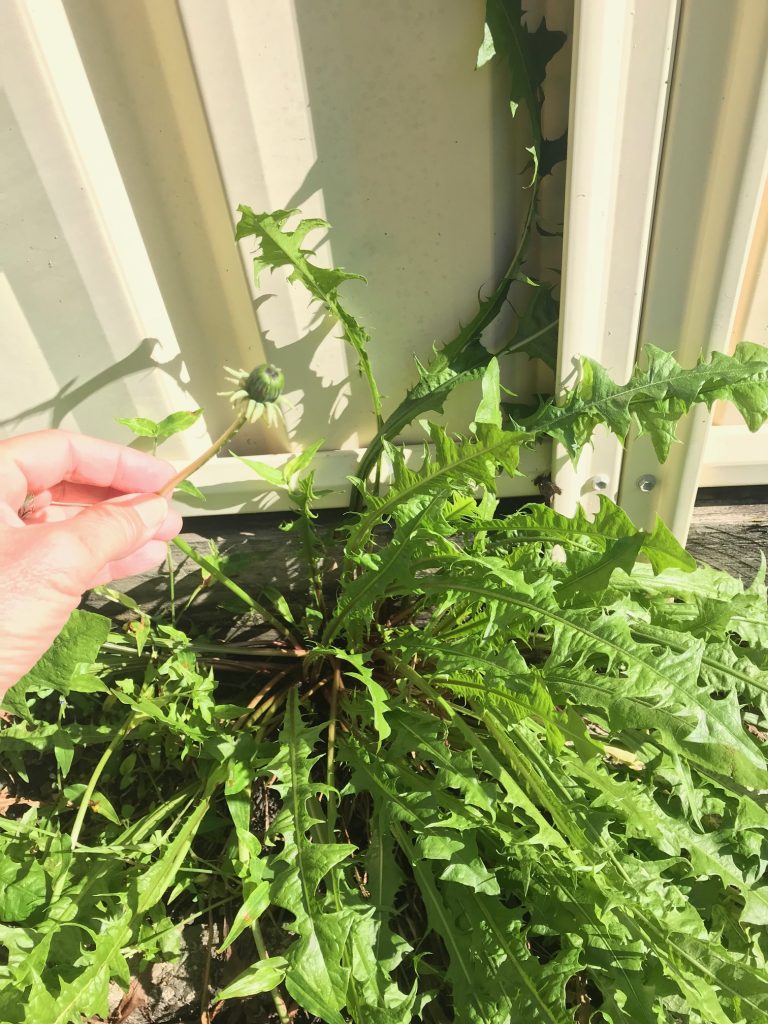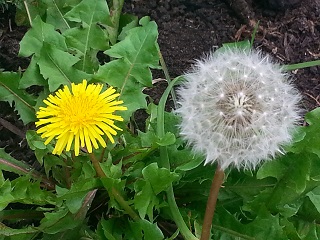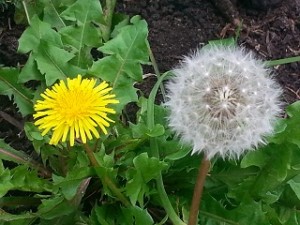 Dandelion herb has not been well received in the gardens of our post WWII western urban culture.
Dandelion herb has not been well received in the gardens of our post WWII western urban culture.
The unblemished green grass lawn has been the pride of most home owners since the 1950’s and the huge annual sales of a certain weed killer gives testimony to that!
Unfortunately what most people have forgotten is that dandelion used to be a welcome sight in garden in the spring and autumn bringing with it the nutritious much needed green leaves, its cheerful, edible, bright yellow flowers and a root that will help heal the liver of the effects of indulging in the heavier fatty diet of winter time.
Dandelion plants improve the fertility of your soil and even bring up nutrients to make them available for other plants in your garden.
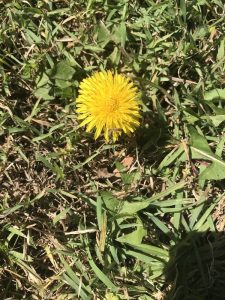 Dandelion is very intelligent – see how this one’s flower is growing so close to the ground – all the Dandelions in this public park get mowed and trampled upon often. The low lying flower saves time and energy and gives the seeds a better chance to form and disperse.
Dandelion is very intelligent – see how this one’s flower is growing so close to the ground – all the Dandelions in this public park get mowed and trampled upon often. The low lying flower saves time and energy and gives the seeds a better chance to form and disperse.
It’s time to make friends with Dandelion again and reap the benefits of all that this hardy plant has to offer us and our gardens.
All parts of Dandelion are of value for nutrition and medicine. Dandelion has a bitter taste which indicates its value as a digestive stimulant – it gets the digestive juices going and also helps the liver to do its work.
The bitterness dissipates from the leaves if you wait about an hour or more before you use them in your salad greens. (Experiment with what works for you – but remember it’s the taste of bitterness that is important for you and your body)
Roots – edible
- contains inulin which is a prebiotic and encourages growth of healthy gut microbiome;
- cleanse the liver and help in bile production for fat metabolism
Leaves – edible
- Rich in minerals especially potassium, calcium and magnesium
- Rich in Vitamin A and C
- Act as a diuretic removing excess water content via the kidneys. It replaces the potassium that is lost (unlike pharmacy diuretics that cause a deficiency of potassium)
- Rich in choline used by the brain for memory; used by the liver in the methylation process ; and used by the nervous system for structure and neuromuscular activity.
Flowers – edible
- Add to salads
- Make an infused oil and use it as a massage oil for muscle pain
